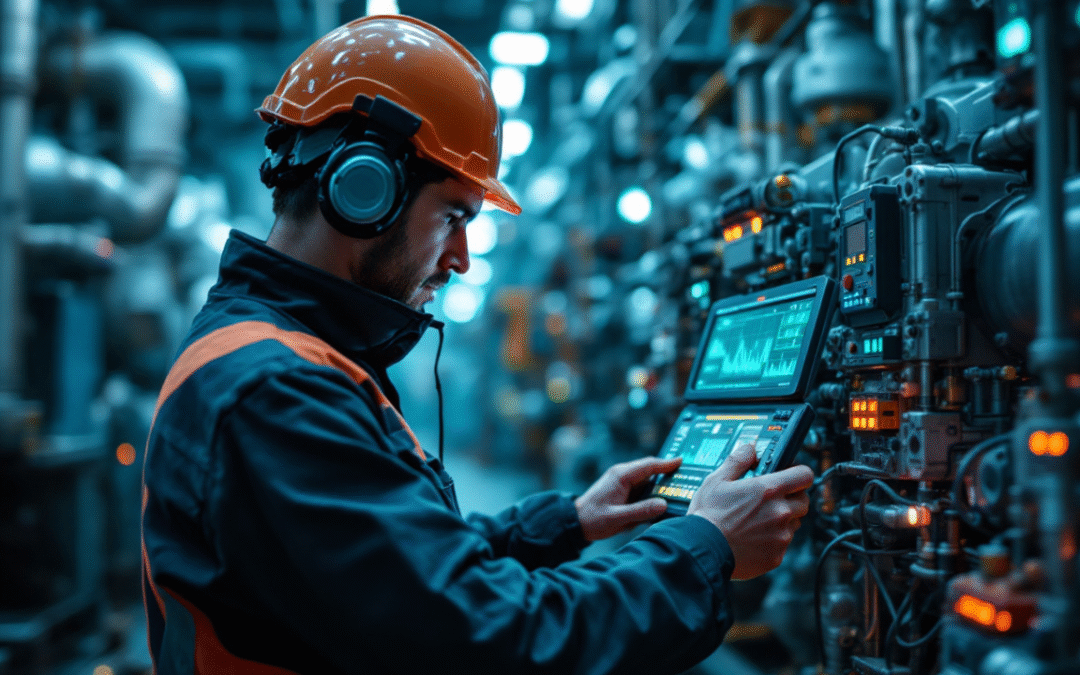In today’s rapidly evolving industrial landscape, the pursuit of operational efficiency and reliability is paramount. One of the indispensable techniques in achieving this is infrared inspection for machine faults. This advanced diagnostic method has proven to be a game-changer for industry QA professionals, enabling them to detect issues before they escalate into costly failures. In this article, we’ll explore the various facets of infrared inspection, its significance, and how it contributes to enhanced equipment reliability.

What is Infrared Inspection?
Infrared inspection is a non-contact diagnostic technique that uses thermal imaging to detect temperature variations in machinery. It involves the use of specialized infrared cameras that capture thermal images, revealing heat patterns that indicate potential faults. This method is invaluable for identifying issues such as overheating components, electrical faults, and mechanical wear.
How Does Infrared Inspection Work?
The process of infrared inspection involves capturing thermal images of machines while they are operational. These images are then analyzed to identify abnormal heat patterns that may indicate underlying issues. For instance, an overheating motor bearing might appear as a hot spot in the thermal image, signaling the need for immediate maintenance.
Importance of Infrared Inspection
The significance of infrared inspection lies in its ability to detect faults early, preventing unplanned downtime and costly repairs. By identifying issues before they lead to catastrophic failures, industries can ensure continuous operation and reduce maintenance costs.
Cost Savings Through Early Detection
One of the primary benefits of infrared inspection is the potential for cost savings. By detecting faults early, industries can avoid expensive repairs and replacements. Additionally, early detection minimizes downtime, further contributing to cost efficiency.
Applications of Infrared Inspection
Infrared inspection finds applications across various industries, including manufacturing, energy, and transportation. Its ability to identify electrical faults, mechanical wear, and insulation issues makes it a versatile tool for ensuring operational reliability.
Electrical Fault Detection
In electrical systems, infrared inspection is used to identify hot spots that may indicate loose connections, overloaded circuits, or faulty components. By addressing these issues promptly, industries can prevent electrical failures and ensure safety.
Mechanical Wear Detection
Mechanical systems benefit from infrared inspection by detecting wear and tear in components such as bearings, gears, and belts. Identifying these issues early allows for timely maintenance, reducing the risk of unexpected breakdowns.
Challenges in Infrared Inspection
While infrared inspection offers numerous benefits, it is not without its challenges. Factors such as environmental conditions, equipment accessibility, and operator expertise can affect the accuracy of thermal imaging.
Environmental Factors
Environmental conditions, such as ambient temperature and humidity, can influence the accuracy of thermal images. It is essential for operators to consider these factors during inspections to ensure reliable results.
Conclusion
In conclusion, infrared inspection for machine faults is a vital tool for industry QA professionals seeking to enhance equipment reliability. Its ability to detect faults early, reduce downtime, and minimize maintenance costs makes it indispensable in modern industrial operations. By embracing this technology, industries can achieve greater operational efficiency and ensure the longevity of their equipment.

FAQs
1. What industries benefit the most from infrared inspection?
Industries such as manufacturing, energy, and transportation benefit significantly from infrared inspection due to its ability to detect electrical and mechanical faults.
2. How often should infrared inspections be conducted?
The frequency of infrared inspections depends on the industry and the criticality of the equipment. Regular inspections are recommended to ensure early fault detection and prevent failures.
3. Are there any limitations to infrared inspection?
While infrared inspection is highly effective, it is subject to limitations such as environmental factors and operator expertise. Proper training and consideration of environmental conditions are crucial for accurate results.
For more insights on equipment failures and their causes, you can visit this external resource. Additionally, explore our internal resources on HVAC failures and gearbox issues for more information.
This article contains affiliate links. We may earn a commission at no extra cost to you.
